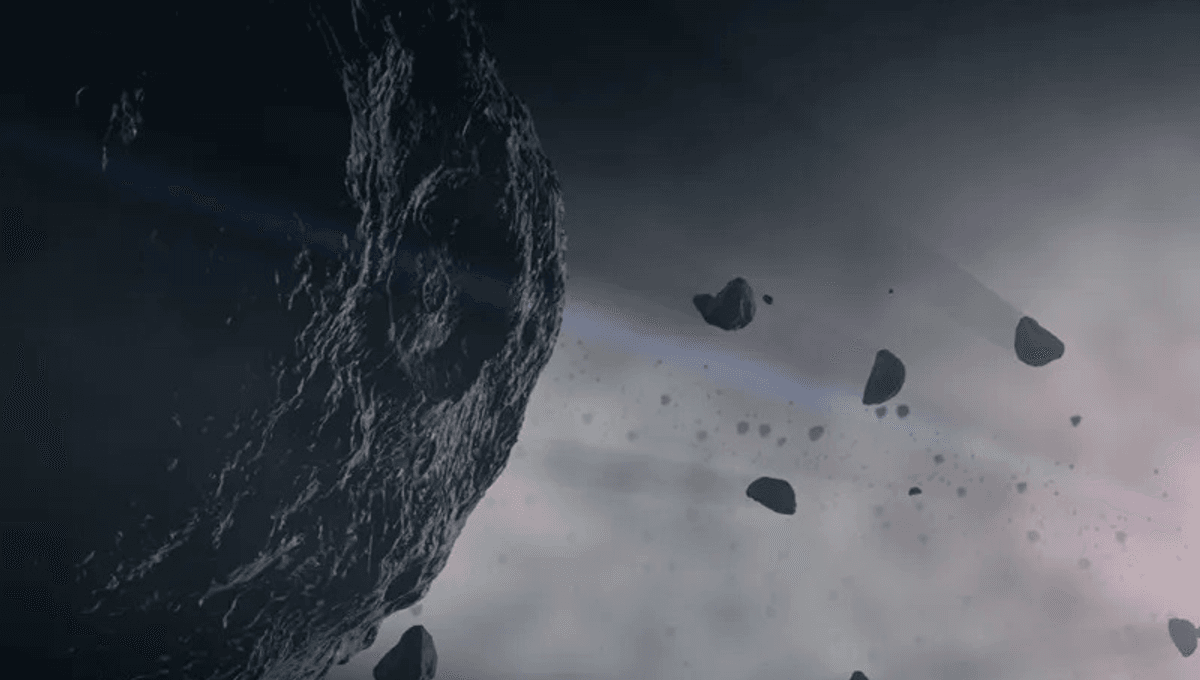
Beyond the physics we know exists lurk many possibilities that have yet to be proven, including a fifth force to add to gravity, electromagnetism, and the strong and weak nuclear forces. Our failure to confirm its existence suggests any fifth force is probably fairly weak, but it could still explain some puzzling aspects to the universe. We are likely to need very precise measurements to find it, and missions to nearby asteroids may provide them.
Hints of a fifth force keep appearing in our data, although some studies have also concluded there is no real evidence for one. Although theoreticians have put up some proposals, there is no consensus on a fifth force’s nature, thus making one particularly hard to find. Nevertheless, if we find an object behaving in a way that can’t be explained with the four existing forces, it will represent a major clue.
“Anomalies in the trajectories of objects across the sky have often led to the discovery of new physical laws or celestial bodies,” Dr Yu-Dai Tsai of Los Alamos National Laboratory and co-authors write in a paper on the topic. “The planet Neptune was inferred based on the irregularities of the orbit of Uranus according to Newton’s theory, and General Relativity was first confirmed with its prediction of Mercury’s anomalous precession.”
Occasionally claims of anomalies in the orbits of planets emerge but these are usually proven to be errors or the result of the gravitational pull of an object we hadn’t taken into account. Asteroids’ paths can have additional complicating factors that are too minor to consider or non-existent for planets. These include disruptions from impacts and the pressure sunlight applies to the surface.
Therefore, if an asteroid’s orbit is not exactly as we anticipate, there could be other explanations besides a previously unknown force. Nevertheless, if we can rule out enough other explanations, extra forces may be worthy of consideration.
Until recently we had not tracked the orbits of asteroids well enough to notice something so subtle, but that is changing. Asteroids that cross Earth’s orbit are now being followed far more closely, particularly those to which we have sent missions, such as Bennu and the Didymos/Dimorphos system.
“Interpreting the data we see from tracking Bennu has the potential to add to our understanding of the theoretical underpinnings of the universe, potentially revamping our understanding of the Standard Model of physics, gravity and dark matter,” said Tsai in a statement.
Using data from the OSIRIS-REx mission and ground based-measurements Tsai and colleagues looked for anomalies in Bennu’s orbit.
Based on what is available the authors report, “There is no evidence in the data for the presence of a fifth force affecting the motion of Bennu.” However, they do not consider the project finished. Precise as the data is, it still contains some uncertainties, which set a ceiling on the possible strength of such a force at this scale.
When Apophis makes its close pass to Earth in 2029, the team plan to use the exceptionally precise measurements that will be made to look for deviations from expectations. They expect this to tighten the range of possibilities for a fifth force even further.
Known forces have subatomic particles that carry them. The strong force, while immensely more powerful than the others at small scale, doesn’t reach far outside the nucleus because the gluons that carry it cannot travel far. Extensions to the Standard Model of Particle Physics propose an ultralight boson that would carry the fifth force. For it to be detectable in the orbits of asteroids, this force would have to be long range, like gravity, so the carriers could not be constrained like gluons. However, much of the evidence that makes us think such a force exists operates on an even larger scale of galaxies, so this is probably not a problem.
Fifth force-carrying ultralight bosons are candidates for dark matter. However, many other types of dark matter have been proposed, and if these are lurking within the Solar System they could produce different changes to asteroid obits. The authors also consider the possibility that so-called dark photons or other exotic particles could be having an effect.
The study is published open access in Communications Physics.
Source Link: If A Fifth Force Exists, Asteroid Missions Could Help Find It